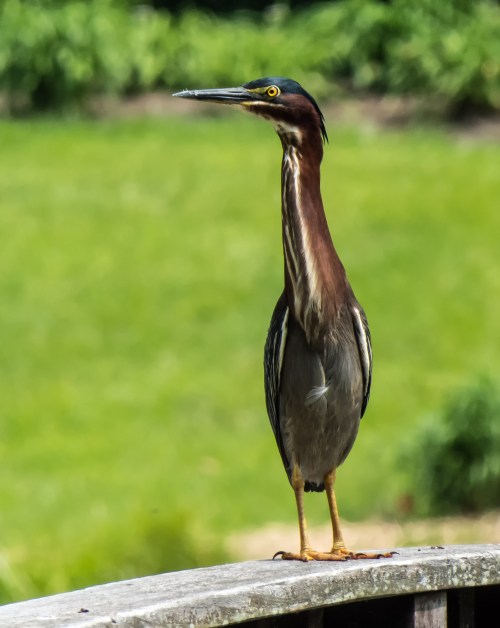What is the most unusual-looking flower that you have ever seen? For me, it would probably be the Japanese Jack-in-the-Pulpit (Arisaema sikokianum). There is something so alien and exotic about this plant that it stopped me in my tracks when I first spotted it last year in early May at Meadowlark Botanical Gardens in Vienna, Virginia. Check out my posting from last year if you would like more details of my first encounter with this plant species.
On Thursday I made a trip the botanical gardens with my friend and photography mentor Cindy Dyer. She was interested in photographing the tulips, peonies, and other flowers, but I made a beeline for the area where I had seen the Japanese Jack-in-the-Pulpit last year. Initially I could not find any, but I asked several of the folks working in the garden beds and one of the walked me to an area where there were two plants that were well past their prime.
As we were talking, another gardener overheard us and noted that she had spotted one further up the trail earlier in the week. I walked really slowly and looked carefully and eventually found the correct spot—there was one wilted Japanese Jack-in-the-Pulpit and one in bloom. The two photos below give you a sense of the beauty of this unusual plant. As you can probably tell, I varied the settings on my camera to give a different feel to each of the images. Although the first image provides a clearer view of the entire plant, I really like the moody feel of the second shot.
The Japanese Jack-in-the-Pulpit is closely related to the Jack-in-the-pulpit (Arisaema triphyllum), which is supposed to be common to the eastern United States, though I have never seen one. The American species looks fairly similar to the Japanese variant, but the spadix, the part that is the “Jack” in the name, is darker in color and the pitcher more closely matches the leaves. If you want to see a beautiful photo of a Jack-in-the-Pulpit growing wild in New England, check out this blog posting by fellow photographer Steve Gingold.
© Michael Q. Powell. All rights reserved.

























































